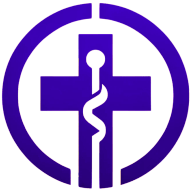8 Emerging Technologies Shaping the Future of Healthcare Research
Imagine a future where predictive analytics can anticipate health issues before they arise, and AI transforms early disease detection. In this exclusive article, insights from a CEO and a Medical Director provide a glimpse into the innovations leading the charge in healthcare research. With eight expert opinions, readers will first explore the game-changing potential of predictive analytics and conclude with the revolutionary impact of wearable sensors for biomechanical analysis. Discover how these advancements are poised to shape the future of healthcare.
- Embrace Predictive Analytics in Healthcare
- Leverage AI for Early Disease Detection
- Utilize 3D Printing for Prototyping
- Explore Bioprinting for Organ Transplants
- Adopt Theranostics for Targeted Cancer Treatment
- Integrate AI for Personalized Medicine
- Enhance Medical Imaging with AI
- Implement Wearable Sensors for Biomechanical Analysis
Embrace Predictive Analytics in Healthcare
One emerging technology I'm particularly excited about is predictive analytics driven by AI and machine learning, especially in how it integrates with platforms like Carepatron to revolutionize healthcare delivery and research. Predictive analytics harnesses vast datasets, such as patient records, genetic data, and behavioral trends, to forecast health outcomes and enable early interventions.
At Carepatron, we're committed to streamlining healthcare processes, and predictive analytics aligns perfectly with this goal by allowing clinicians to shift from reactive care to proactive, personalized care. With tools like AI-powered medical transcription and workflow automation, platforms like ours are already laying the foundation for integrating predictive analytics into everyday practice. For instance, by analyzing appointment patterns, clinical data, and patient behavior, healthcare providers using Carepatron can anticipate no-shows, identify patients at risk of chronic conditions, or predict future care needs.
Looking ahead, predictive analytics will not only empower individual practitioners to offer better care but also enhance public health management. Imagine healthcare professionals using platforms like Carepatron to predict disease outbreaks or adjust workflows automatically based on patient trends. Clinical trials, too, could benefit from these insights by matching the right participants with the right studies, expediting timelines, and monitoring real-time outcomes through integrated tools.

Leverage AI for Early Disease Detection
As a healthcare IT leader, I'm most excited about the potential for artificial intelligence (AI) and machine learning in medical research. AI can analyze huge datasets to find patterns that humans would miss, enabling earlier disease detection and more accurate diagnoses.
For example, AI systems can detect signs of Alzheimer's disease by analyzing speech patterns years before symptoms appear. AI is also helping researchers develop personalized cancer treatments based on a patient's genetic profile. By identifying how different people respond to various drugs, doctors can provide custom care.
The healthcare field generates massive amounts of data, and AI is key to using it. In the coming years, AI will drive major breakthroughs in medical research and transform how we prevent, detect, and treat illness. AI won't replace doctors but will improve their abilities, allowing them to focus on the human elements of care. The future of medicine is human and AI, working together to revolutionize healthcare.
Utilize 3D Printing for Prototyping
3D printing is putting prototypes in the hands of real-world users during the development process, and this is an absolute game changer when it comes to the long-term efficacy of new healthcare products.
As a physician assistant, I'm seeing the shift occur. Poorly designed products are being replaced thanks to a concurrence of research and production. Rather than launching a product and then taking reviews, production companies are able to shift their process as they go, thanks to low-cost trial prototypes that can be printed on site.
The result is healthcare research more deeply connected to the lived experiences of patients and medical professionals.

Explore Bioprinting for Organ Transplants
Bioprinting is something I'm really excited about in healthcare research. This innovative approach merges 3-D printing with biological materials, which can create actual tissue structures for medical use, like organ transplants and regenerative medicine. When I first learned about it, I was blown away by the potential it has to change the landscape of patient care. Imagine a future where we can print organs tailored to individual patients, eliminating the need for donors and reducing the risk of rejection. It's a fascinating leap toward personalized medicine, and I truly believe it could lead to significantly improved patient outcomes.
Looking ahead, I see bioprinting shaping the future in ways we're just beginning to grasp. As we refine the technology and understand more about tissue engineering, the possibilities for treatment will expand immensely. It's exciting to think that conditions that once required long wait times for transplants or extensive treatments could be addressed more efficiently. I envision a world where healthcare becomes more proactive, with solutions that not only heal but also restore the quality of life. The thought of being part of a field that's on the brink of such transformative innovation is incredibly motivating.

Adopt Theranostics for Targeted Cancer Treatment
One emerging technology in healthcare research that excites me is theranostics, particularly in prostate cancer treatment. Having worked with cancer patients, I've seen first-hand the limits of traditional therapies, like chemotherapy, in both effectiveness and quality of life. Chemo has been a standard for late-stage cancer, but its harsh side-effects, like nausea and hair loss, often leave patients feeling drained.
Theranostics is a combination of therapy and diagnostics that targets cancer cells while sparing healthy ones. This reduces many of the harsh side-effects associated with chemotherapy. I've seen patients report only mild fatigue or dry mouth, and many maintain a much higher quality of life. One patient even mentioned how grateful he was to continue daily walks with his wife, free from the debilitating exhaustion chemo used to cause.
The most remarkable part is its targeted nature. By focusing only on cancer cells, theranostics minimizes damage to healthy tissue, which is a major breakthrough. Many men diagnosed with prostate cancer feel anxious about treatments like chemo because of the impact on their quality of life. Theranostics bridges that gap, offering effective treatment without the severe side-effects.
Currently, theranostics is FDA-approved for prostate cancer and in trials for other cancers. Based on trends and the success stories I've encountered, I believe it could eventually replace chemotherapy in many cases. It's not just about better treatment; it's about giving patients their lives back.
As this technology evolves and becomes more widely accessible, with insurance covering it for qualifying patients, I see a future where cancer care is more humane and effective. The shift from traditional chemo to targeted treatments like theranostics marks a new era in oncology.

Integrate AI for Personalized Medicine
Hello,
I am John Russo, the VP of Technology Solutions at OSP Labs.
Technological innovations are booming in the healthcare industry, contributing significantly to research. Different technologies are transforming healthcare and enhancing research and patient outcomes. Multiple emerging methodologies are streamlining healthcare research, and I'm excited about how artificial intelligence will enhance personalized medicine.
Artificial Intelligence in Personalized Medicine
Personalizing medicine and treatment requires human intelligence, and it is difficult for physicians to cover the individual needs of every patient. This is where artificial intelligence contributes; AI uses machine-learning algorithms and data analysis to create systems that can perform tasks like a human brain.
The ongoing developments in AI tools will boost the ability to analyze vast patient data for improved personalized medicine and treatment plans. The intent behind AI in personalized medicine will change the approach from providing the exact solution to all to more customized treatment.
Applications and Innovations
The current innovations, including IBM Watson and Google DeepMind, are performing well in streamlining genomic analysis and identifying mutations. The algorithms are helping in predicting patient responses to different treatments.
AI platforms can predict the recurrence of any disease or complications in the patient. These predictions are vital in taking preemptive measures, especially in chronic diseases like diabetes and others.
The time and cost spent on discovering new drugs have been significantly reduced, thanks to AI. Companies like Insilico Medicine can now quickly identify new drug candidates, their safety, and other details, paving the way for a more efficient and hopeful future in healthcare.
Impact on the Future of Healthcare
I have created multiple healthcare software solutions, and developing AI tools will be highly beneficial in shaping the future. Personalized medicine and treatment have greatly reduced adverse effects and improved patient outcomes. Automation in data collection and analysis will eventually reduce time and improve efficiency. In the future, AI will be capable of designing clinical trials and managing them in real-time.
Best regards,
John
https://www.osplabs.com

Enhance Medical Imaging with AI
One area that excites me is the use of AI and machine learning in medical imaging. As someone with 25+ years optimizing imaging workflow and infrastructure, I see huge potential here. For example, AI can help radiologists detect anomalies, like tumors, much earlier. When I helped a large health system implement a new PACS, we built in AI tools to auto-flag scans showing changes over time. Radiologists said this significantly sped up reading times and helped catch issues they might have missed.
Vendor-neutral archives (VNAs) are another promising area. When I advised a community hospital switching PACS vendors, implementing a VNA first allowed them to retire the legacy PACS at their own pace. The VNA stored old and new data, enabling a gradual transition to the new system without interruptions. More hospitals will likely adopt VNAs as a "single source of truth" for enterprise imaging.
Finally, as hospitals consolidate into massive health systems, interoperability and data sharing become crucial. I'm working with a health system now to implement HL7 and FHIR interfaces allowing their hospitals, clinics, and physicians to access diagnostic images from anywhere. Soon, providers will demand seamless data sharing across all points of care. The systems I help develop today have interoperability and scalability at their core, shaping healthcare's future.

Implement Wearable Sensors for Biomechanical Analysis
One emerging technology I am excited about in healthcare research is the use of real-time biomechanical analysis through wearable sensors. These devices can monitor movement patterns, muscle activity, and joint stress as people go about their daily activities or during exercise. What excites me most is how this technology allows us to analyze biomechanics outside of a clinical setting, providing a clearer picture of how someone's posture and movement affect their overall health. With this data, we can create highly personalized treatment plans, focusing not only on injury recovery but also on preventing issues before they arise. Given my background in treating athletes and people with postural syndromes, I see this as a game-changer, especially for managing long-term musculoskeletal health.
For example, we recently integrated a wearable sensor system at The Alignment Studio for patients with chronic lower back pain. One client, a desk worker who also enjoyed running, was experiencing persistent issues despite physiotherapy and strength training. By using real-time biomechanical feedback, we identified subtle gait imbalances and postural deviations during his running that were contributing to his back pain. With this data, we adjusted his rehabilitation plan, focusing on specific muscle activation and alignment corrections. Within a few months, he was not only pain-free but also improved his running performance. This successful outcome reflects my long years of experience in musculoskeletal health and demonstrates how blending technology with hands-on care can enhance patient outcomes and reshape the future of physiotherapy.



